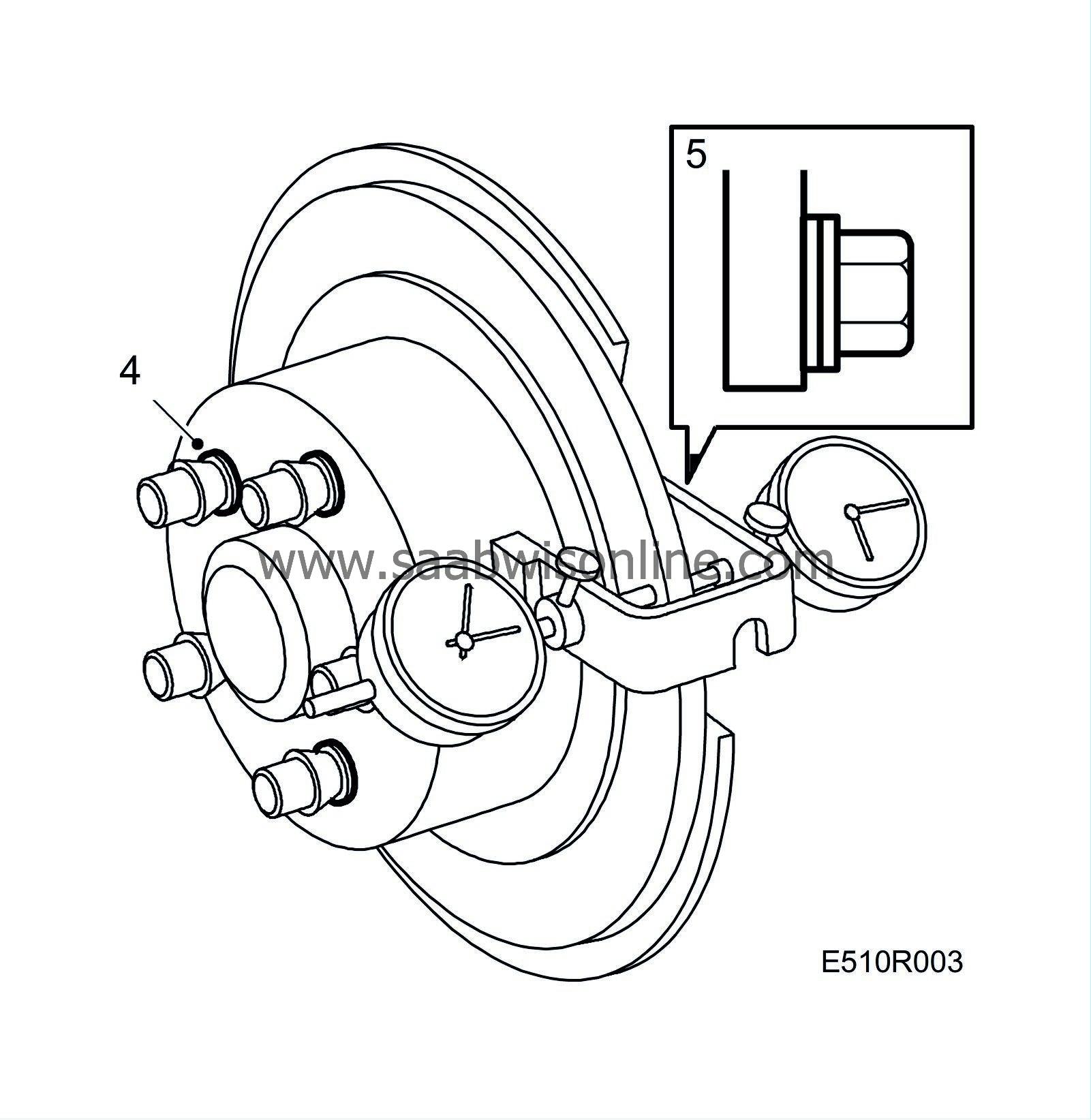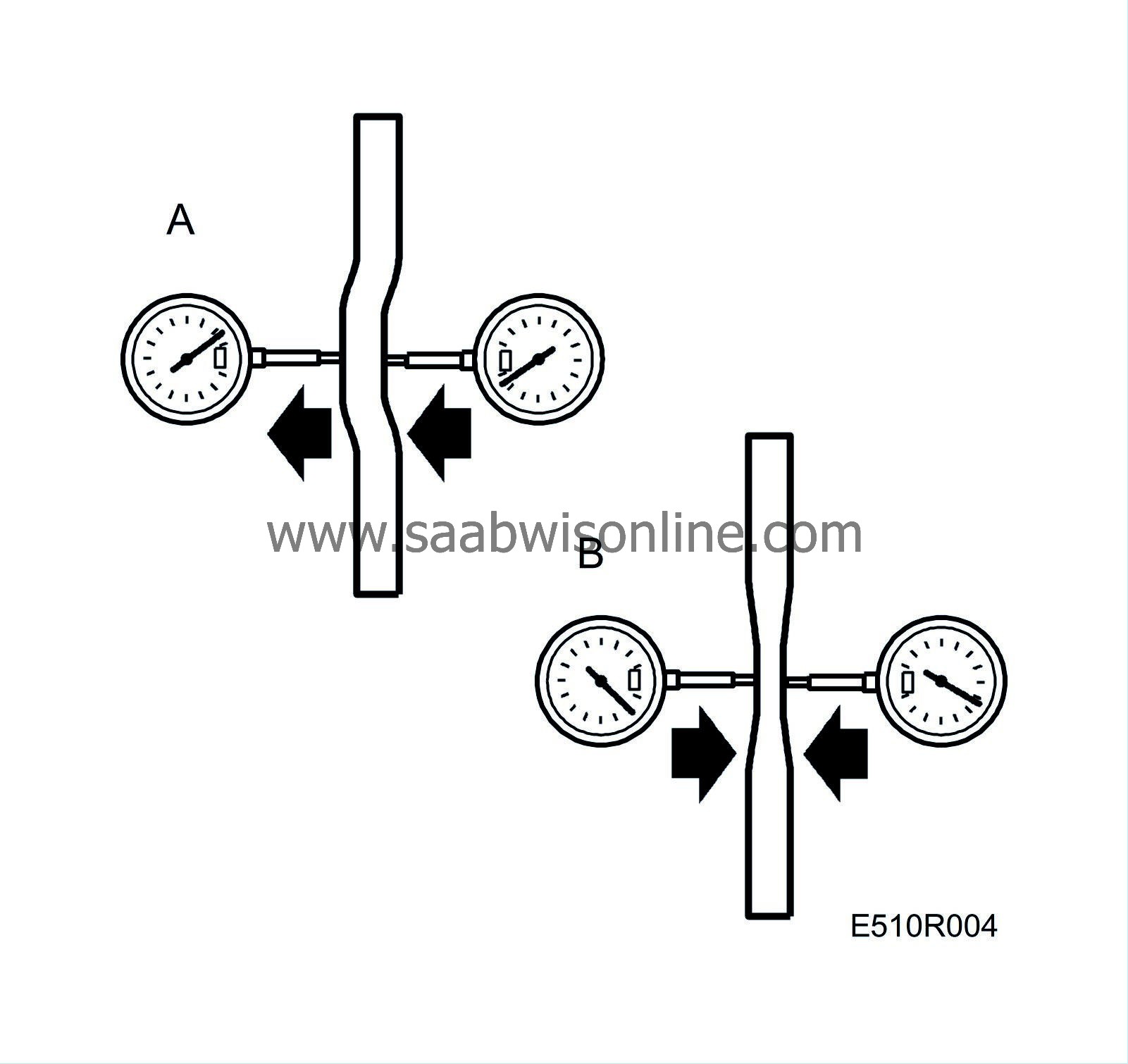Checking for lateral runout and variation in thickness, rear wheels
|
|
Checking for lateral runout and variation in thickness, rear wheels
|
|
1.
|
Raise the car and remove the rear wheels.

|
|
2.
|
Start checking on one side.
Press in the brake piston, using a pair of slip-joint pliers.
|
|
3.
|
Remove the brake caliper without detaching the brake pipe. Undo the pipe fastening on the link arm and suspend the caliper with a strap, see Swinging caliper, Adjustment/replacement, "Brake caliper, rear wheel, swinging caliper (39)" or Fixed caliper, Adjustment/replacement "Fixed caliper, rear wheel changing (46)".
|
|
4.
|
Screw in the five wheel studs with a washer, part No. 80 73 124, fitted on each one.
|
|
5.
|
Mount the brake disc measuring tool on the lower retaining lug for the brake caliper, fitting washers in between so that the mounting screw does not reach the brake disc.
Fit the dial gauges, part No. 78 40 622.
|
|
6.
|
Rotate the brake disc while observing the outboard dial gauge. Zero both gauges when the negative reading obtained on the outboard one is at maximum.
|
|
7.
|
Rotate the disc and read the gauges. Note the runout (A) and variation in thickness (B).

|
|
8.
|
Check that the readings are within the tolerance limits, see
 .
.
|
|
9.
|
Remove the dial gauges, brake disc measuring tool and wheel studs with washers.
|
|
10.
|
Fit the brake caliper, apply Loctite 242 to the threads and tighten the bolts, using a torque wrench.
|
|
11.
|
Fit the wheels, see
Wheels
.
Tightening torque 110 Nm (81 lbf ft).
|
Important
|
|
The wheel must hang freely when the wheel bolts are being tightened.
|
|
|
|
|
12.
|
Repeat this method of measurement on the other front wheel.
|
|
13.
|
When the measurements have been completed, lower the car and depress the brake pedal to press out the brake pads.
|


 .
.


